Table of Contents
The Kenyan flag, also known as the flag of Kenya, holds a significant place in the nation’s history and culture. With its vibrant colors and meaningful symbolism, it represents the Kenyan identity and heritage. In this article, we will delve into the intriguing aspects of the Kenya flag, its design, historical background, and the symbolism behind its elements.
The Kenya flag features a horizontal tricolor of black, red, and green with two white fimbriations between them, and a Maasai shield and spears in the center. The black color symbolizes the people of Kenya, the red represents the blood shed for independence, and the green stands for the country’s natural resources and wealth. The Maasai shield and spears symbolize the defense of freedom.
Kenya Flag: Colors and Symbolism
- The flag of Kenya features a horizontal tricolor of black, red, and green with two white fimbriations and a central Maasai shield and spears.
- The black color symbolizes the Kenyan people and their identity.
- The red color represents the struggle, sacrifices, and bloodshed for Kenya’s independence.
- The green color stands for the country’s natural wealth, resources, and lush landscapes of Kenya.
- The Maasai shield and spears in the center signify the defense and protection of the country’s freedom and independence.
- The flag’s design reflects the nation’s aspirations, cultural heritage, and unity among the Kenyan people.
Flag of Kenya
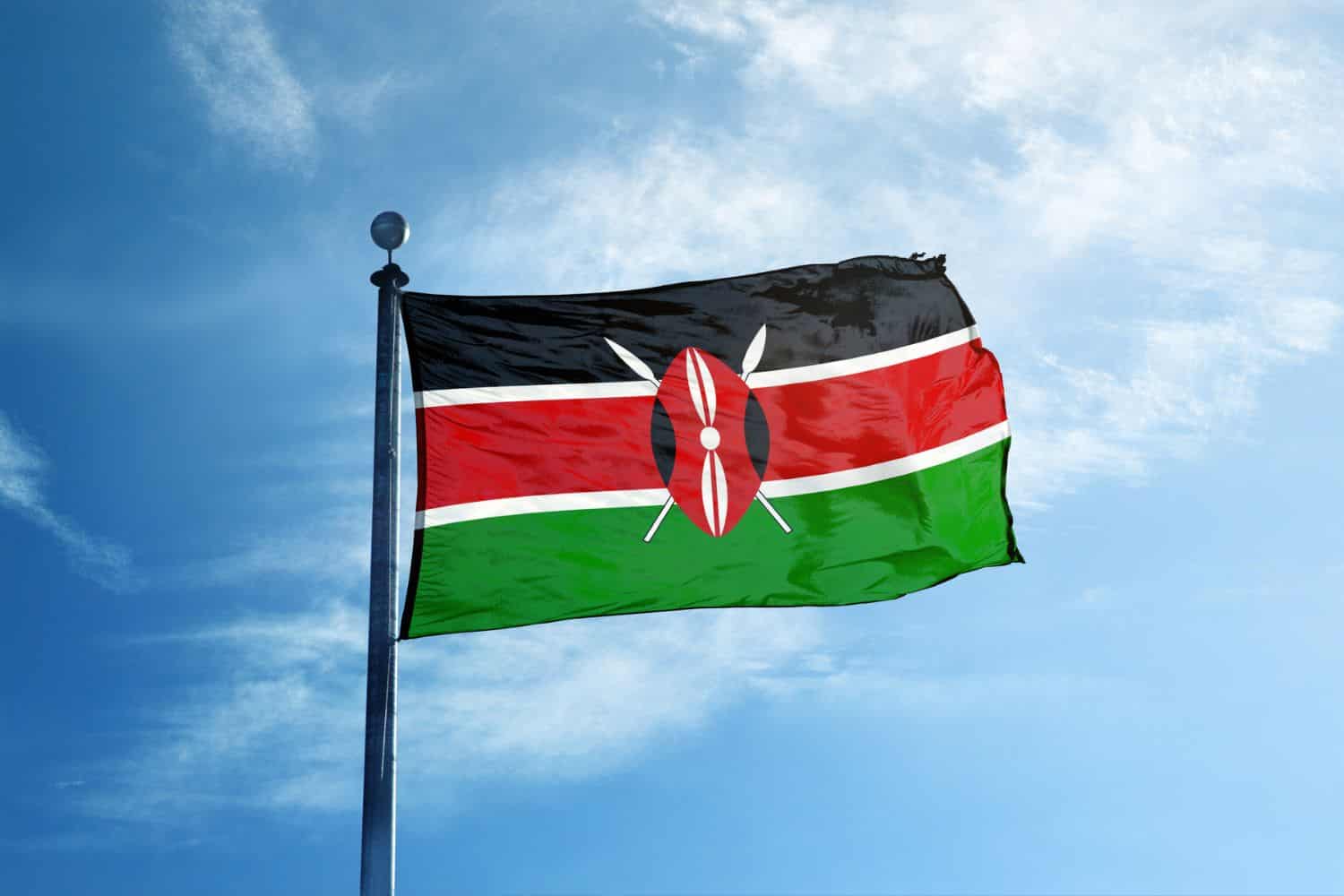
The flag stands as a powerful symbol that encapsulates the cultural significance and spirit of the nation. Its design consists of three horizontal stripes in black, red, and green separated by two thin white stripes, with a Maasai shield and two crossed spears at the center. The black color symbolizes the people of Kenya, the red denotes the struggle for freedom, and the green represents the natural resources. The white stripes reflect peace and unity. The Maasai shield and spears hold historical and cultural significance, symbolizing the defense of freedom in Kenyan culture.
The history of the flag is intertwined with Kenya’s rich heritage and struggle for independence. Adopted on December 12, 1963, the flag represents the unity and aspirations of the Kenyan people.
Beyond its aesthetics, the flag from Kenya carries deep symbolic meanings. The colors reflect the values and aspirations of the Kenyan people, symbolizing their identity, their struggle, and their rich environment. The Maasai shield and spears represent the nation’s defense of its freedom and heritage. It embodies Kenya’s cultural heritage and serves as a reminder of the nation’s resilience and unity.
National Flag Etiquette and Protocol
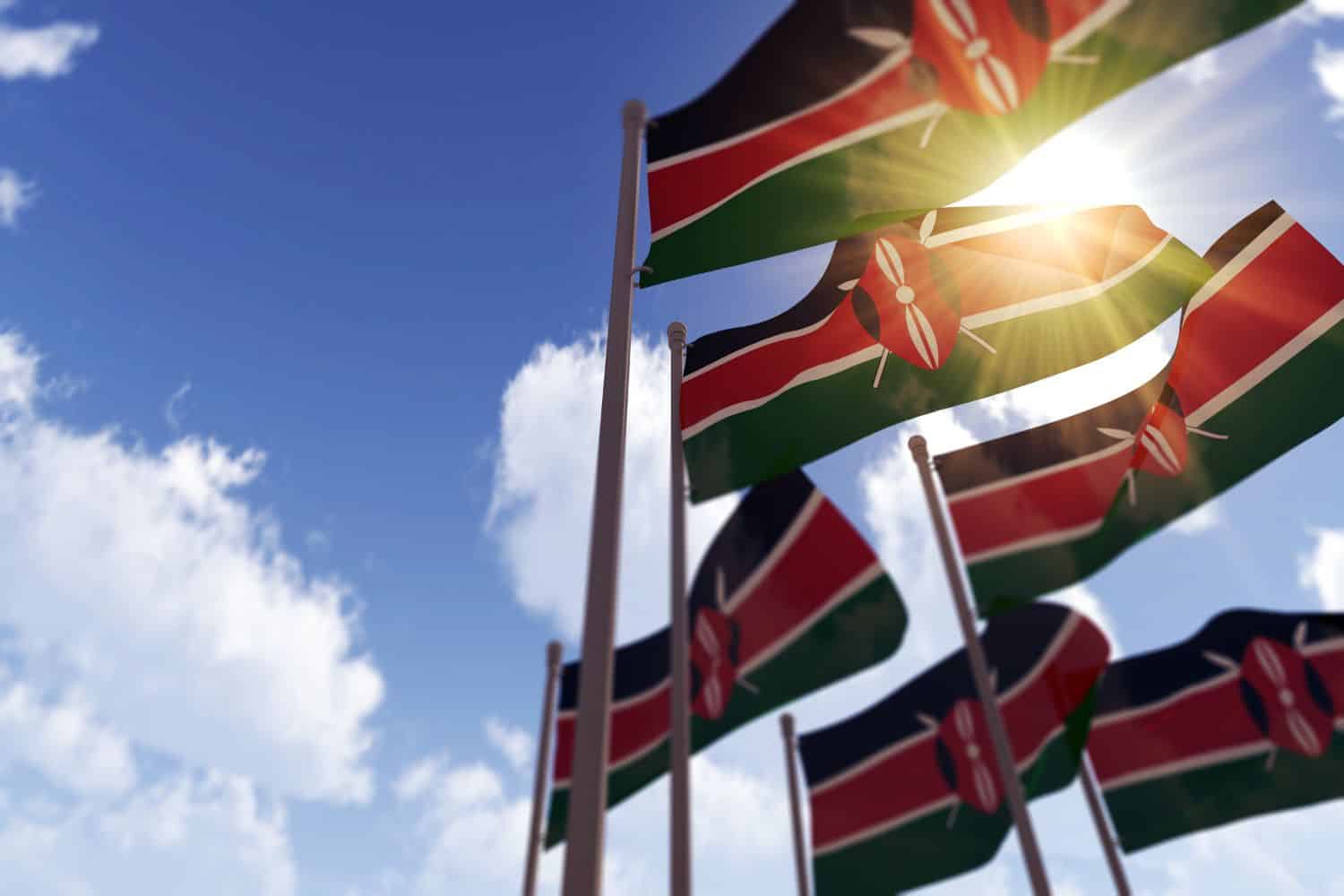
Respecting the proper usage and display of the Kenyan flag is of utmost importance. Understanding flag etiquette is essential, especially during national events and ceremonies. Learn about the protocols governing the handling, hoisting, and lowering of the flag. Discover the appropriate procedures for retiring or handling damaged flags, ensuring they are accorded the respect they deserve.
- Proper Handling: The Kenyan flag should be handled with care and respect, ensuring it is not allowed to touch the ground or floor. It should be held upright and not dragged.
- Hoisting and Lowering: When hoisting the flag, it should be raised briskly and lowered ceremoniously. It is customary to hoist the flag at sunrise and lower it at sunset, although this may vary depending on the occasion or specific guidelines.
- Displaying the Flag: The Kenyan flag should be displayed with the black stripe on top, followed by red and green stripes, with the Maasai shield and white spears centered. It should be flown freely and not entangled or obstructed.
- Half-Staff: Lowering the flag to half-staff is a gesture of mourning or respect. This should be done on specific days of remembrance or when directed by authorities to honor national tragedies or the passing of significant figures.
- Flag Retirement: When a Kenyan flag becomes damaged, torn, or worn out, it should be retired in a dignified manner. This can involve burning it in a respectful and solemn ceremony, following appropriate guidelines and local regulations.
- Flag Size and Placement: The size of the Kenyan flag displayed should be proportionate to the size of the flagpole or display area. It is recommended to consult local guidelines or authorities for specific rules regarding flag size and placement.
- Respectful Disposal: If a flag cannot be retired through burning, it should be disposed of in a respectful manner. This can involve burying it or handing it over to authorized organizations that specialize in flag disposal.
Interesting Facts and Trivia

Embark on a journey of fascinating facts and lesser-known trivia about the Kenyan flag. Discover unique features within the flag’s design that hold hidden symbolism. Uncover stories of famous incidents or events involving the flag that have left an indelible mark on the nation’s history and identity.
Rich Tapestry of History
- 1963: The current flag of Kenya was adopted on December 12, symbolizing the unity and aspirations of the Kenyan people.
- Colors and Symbolism: The black color represents the people of Kenya, the red symbolizes their struggle for freedom, and the green represents the natural wealth of the nation. The white fimbriations signify peace and unity, while the central Maasai shield and spears stand for the defense of freedom.
- National Identity: The flag embodies Kenya’s rich history, cultural heritage, and the nation’s ongoing pursuit of unity, prosperity, and progress.
These historical facts highlight significant moments in the history of the Kenyan flag, showcasing its role in shaping Kenya’s national identity and symbolizing its struggles and aspirations throughout the years.
Flag-Related Symbols and Emblems
A flag is not alone in representing the nation’s identity. Explore additional national symbols and emblems closely associated with Kenya, understanding their significance and how they relate to the flag. Delve into their historical and cultural roots, further enriching your understanding of Kenya’s heritage. It’s easy to travel and make a Kenya tour to visit the country’s best destinations.
Symbolisms of the Kenyan Flag
The flag of Kenya holds several symbolic elements that represent the nation’s history, values, and aspirations. Here are the symbolisms of the Kenyan flag presented in itemized form:
- Black Color: Represents the Kenyan people and the majority population.
- Red Color: Symbolizes the struggles for independence and the sacrifices made by the Kenyan people throughout history.
- Green Color: Stands for the natural wealth and the beautiful landscapes of Kenya.
- White Fimbriations: Reflect peace and unity.
- Shield and Spears: Depict the defense of freedom and the Kenyan people’s readiness to stand for their rights.
- Flag’s Design: Reflects Kenya’s aspirations, cultural heritage, and unity among the Kenyan people.
- National Identity: The flag serves as a powerful symbol that unifies the Kenyan people, reminding them of their shared heritage and cultural identity.
- National Aspirations: Through its design and elements, the flag embodies the aspirations and values of the Kenyan nation, including freedom, unity, and heritage.
These symbolisms in the flag contribute to the country’s sense of identity and pride, reflecting its historical journey and cultural significance.
Flags of Similar Countries or Regions
Examining the flags of neighboring countries or regions can provide intriguing insights. Compare and contrast the flags, exploring similarities in design, colors, or symbolism. Uncover historical and cultural connections between flags, shedding light on shared influences or distinctive identities.
Kenyan Flag vs Tanzanian Flag

Similarity: Both flags feature a black stripe.
Difference: The Tanzanian flag includes a green field and a diagonal division of blue and yellow.
Kenyan Flag vs Ugandan Flag

Similarity: Both flags have a black stripe.
Difference: The Ugandan flag includes a grey-crowned crane with one leg raised in the center.
Kenyan Flag vs Somali Flag
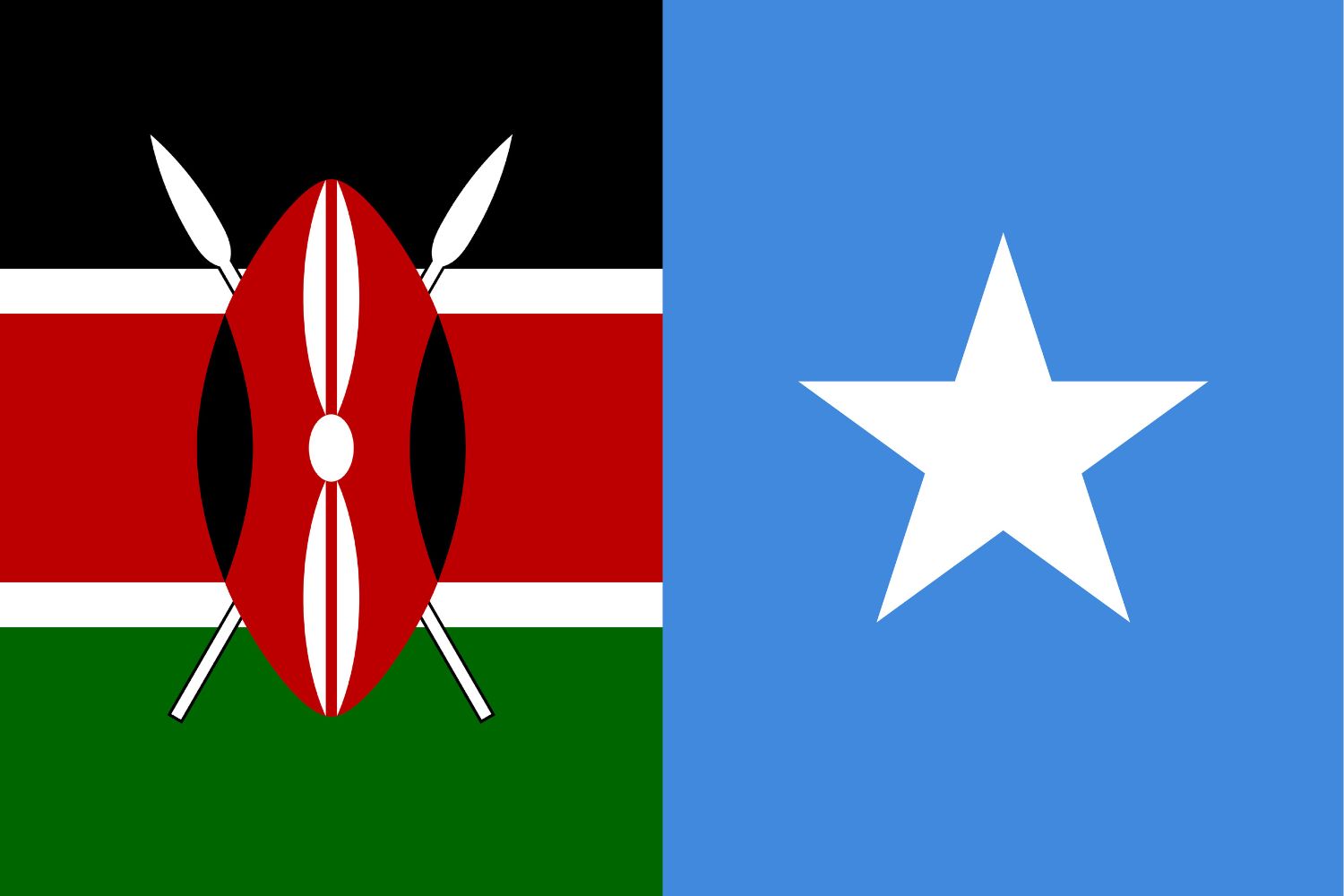
Similarity: Both flags use blue as a prominent color.
Difference: The Somali flag has a white star in the center on a blue field.
Kenyan Flag vs Ethiopian Flag
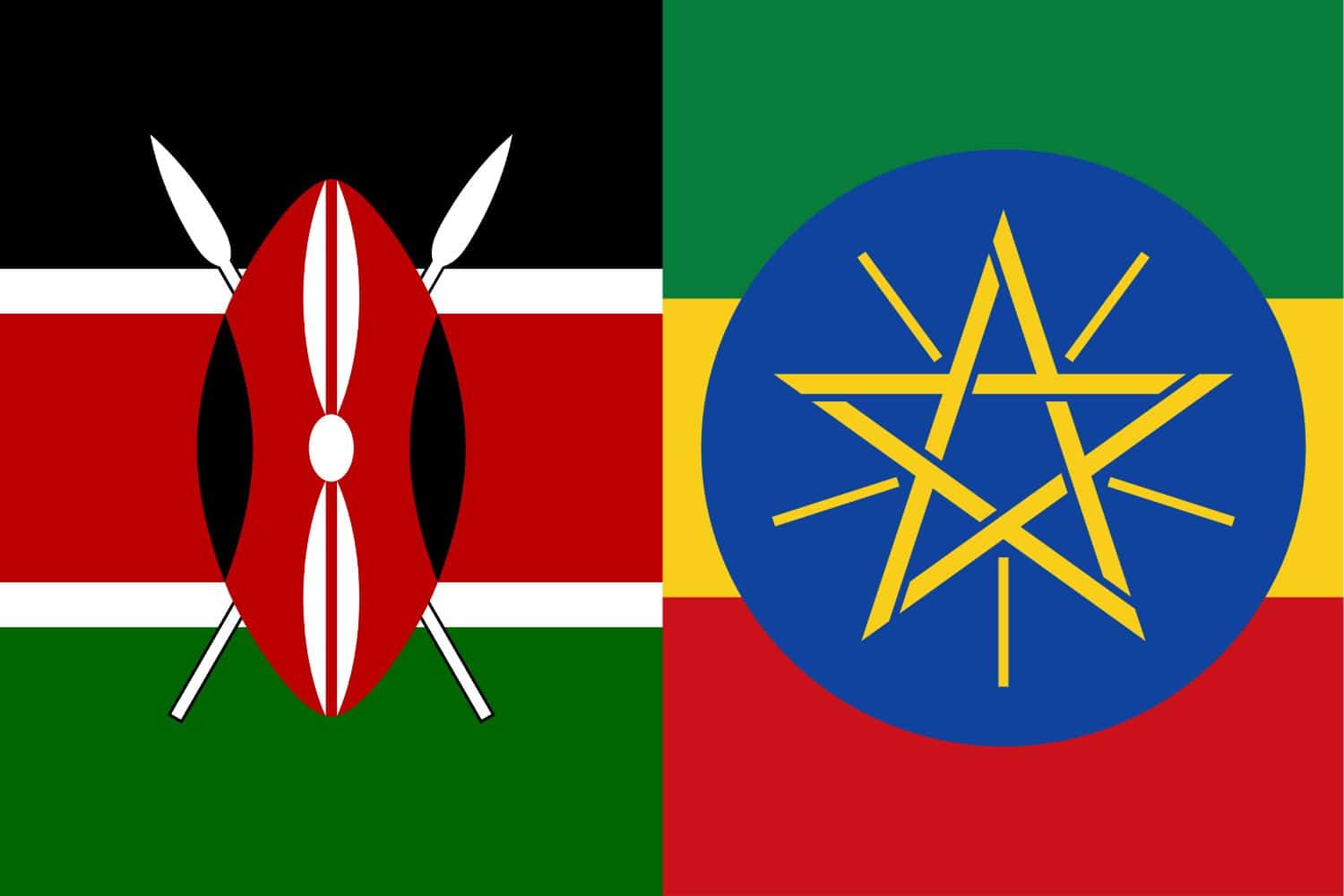
Similarity: Both flags have a red stripe.
Difference: The Ethiopian flag includes green, yellow, and red horizontal stripes with a blue circle and a star in the center.
Kenyan Flag vs South Sudanese Flag

Similarity: Both flags feature a black stripe.
Difference: The South Sudanese flag includes a blue triangle on the hoist side with a yellow star and stripes of green, white, red, and blue.
Kenyan Flag vs Rwandan Flag
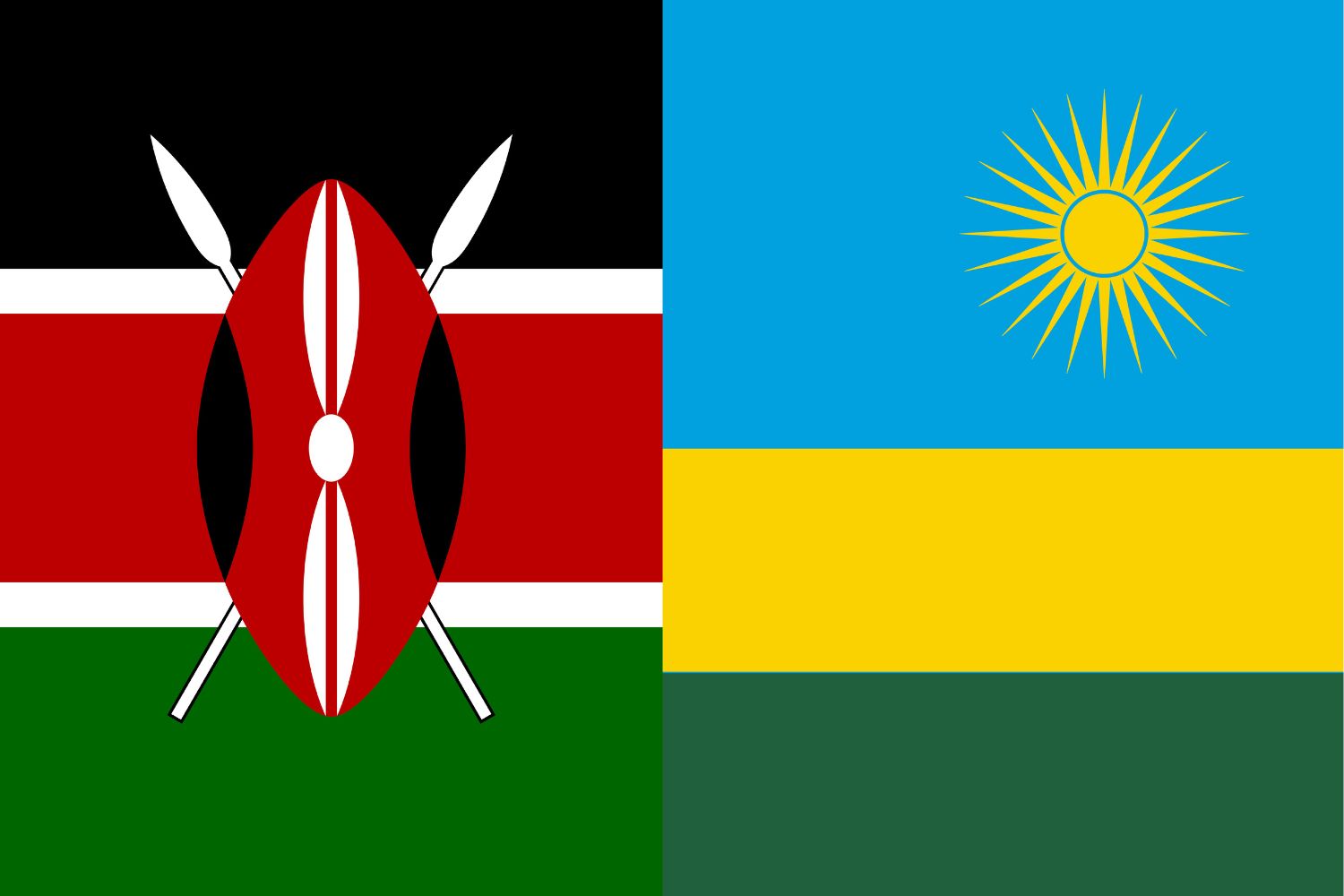
Similarity: Both flags have a green stripe.
Difference: The Rwandan flag includes blue, yellow, and green horizontal stripes with a yellow sun in the upper right corner.
Frequently Asked Questions (FAQs)
Discover answers to common questions related to the Kenya flag picture. From its historical origins to the symbolism behind its elements, find concise and informative responses that address inquiries commonly posed by those curious about Kenya’s flag.
When was the Kenyan flag adopted?
The Kenyan flag was officially adopted on December 12, 1963, the day Kenya became an independent republic.
What do the colors on the Kenyan flag represent?
The black color represents the people of Kenya, the red stands for their struggle for freedom, the green symbolizes the country’s rich natural resources, and the white fimbriations (lines) between the black, red, and green stand for peace and unity.
What is the significance of the shield and spears in the flag’s center?
The Maasai shield and two spears in the center represent the defense of freedom and the readiness of the Kenyan people to defend their homeland.
Who designed the Kenyan flag?
The Kenyan flag was designed based on the flag of the Kenya African National Union, a key political party that fought for Kenya’s independence.
Has the Kenyan flag changed since independence?
No, the design of the Kenyan flag has remained consistent since it was first adopted in 1963.
What are the official dimensions and proportions of the Kenyan flag?
The official proportions of the Kenyan flag are 2:3, meaning its width is two-thirds of its length.
How is the Kenyan flag treated during national ceremonies?
The flag is given a place of honor during national ceremonies and is raised during the playing of the national anthem.
Are there any rules or customs related to the display of the Kenyan flag?
Like many national flags, the Kenyan flag should not be allowed to touch the ground, should be displayed in a respectful manner, and should not be used for commercial or non-official purposes without permission.
How does the Kenyan flag differ from other East African flags?
While many East African flags utilize similar colors (red, black, and green) derived from the Pan-African movement, Kenya’s flag uniquely features the Maasai shield and spears, emphasizing the country’s distinct cultural identity.
What happens to worn-out or damaged Kenyan flags?
Traditionally, worn-out or damaged flags should be disposed of in a dignified way, often through burning, to ensure respectful treatment of the symbol.
More About Kenya
[the-post-grid id=”50384″ title=”Kenya Main page”]
